Ever feel like your face is telling a different story to how you actually feel inside?
You’re energetic, present, and still very much you — but lately, your reflection doesn’t quite match that. Subtle hollows, softening contours, or fine lines can quietly shift how we see ourselves, even when nothing else has changed. It’s not about chasing youth — it’s about reconnecting with the version of yourself that still feels current and confident.
Dermal fillers offer a subtle, non-surgical way to restore facial balance, lift tired features, and refresh your appearance — without changing what makes you you. In this guide, you’ll learn:
-
What dermal fillers really do (and don’t)
-
Where they can be used — safely and naturally
-
What to expect before, during, and after treatment
-
How to choose a practitioner you can trust
Let’s explore how dermal fillers can help you look as vibrant as you feel.

Our Preferred Partner - Neauvia Hydro Deluxe
Neauvia Hydro Deluxe is a premium skin booster combining pure hyaluronic acid with amino acids Glycine and L-Proline, plus Calcium Hydroxyapatite, to deliver deep hydration, improved firmness, and subtle collagen stimulation. Its smooth consistency integrates naturally into the skin, enhancing texture and radiance with results that can last up to nine months and minimal downtime
Your Dermal Fillers Questions
Real Questions from Real People - Answered
Straightforward answers to the questions people like you are asking right now about Dermal Fillers.

Radiesse.
Hi, I’m looking for radiesse. Can I have prices ? Thanks
chin treatment with dermal fillers
I am really self conscious of my bum chin
To view all the Dermal Fillers questions, please click here.
Or click here to ask your own question.
Find A Verified Clinic
Trusted Dermal Fillers Experts, Local to You
Easily connect with qualified, verified professionals for safe, reliable treatment.


Hoole Medispa
51 Hoole Road, Hoole, Chester, CH2 3NH
Welcome to Hoole Spa and Aesthetics situated in the beautiful Grade II listed building in the suburbs of Hoole, Chester.

Aurora Aesthetic Solutions
2 York Road, Strensall, York, YO32 5XT
At Aurora Skin Health Solutions, we believe healthy, radiant skin is the key to confidence and well-being. Our expert team offers a range of cutting-edge treatments.
To find a Dermal Fillers clinic near you, please click here.
Dermal Fillers Reviews
Real Experiences. Honest Feedback.
Read what others have to say about Dermal Fillers before you decide.

sarah failes, Wickham
"I was recommend Athena Aesthetics at the beginning of the year and started treatment in February for Botox and lip flip, which I've continued with over the months this year and 100% happy with all that I have had done. On Sunday I modelled for lip fillers,I was very nervous about the procedure but I shouldn't of been as Hayley explained everything fully on what was going to happen plus I had plenty of numbing cream. I love my lips I'm really happy and I would totally recommend anyone who is thinking of having a procedure done to see Athena Aesthetics skin care clinic.
Hayley is lovely and so easy to talk too. I'm so happy the clinic was recommend as I feel relaxed, confident and comfortable every time I visit. Thank you look forward to my next visit. Sarah Failes"
Debbie Tann, West Malling
"I am absolutely over the moon with my treatments from Dr. Raquel.
I have been a patient for over 3 years now and my skin is in great condition.
She has such an honest and sincere approach. I can talk to her about anything, it’s like visiting a friend.
I have had peels, fillers and now on Polynucleotide treatment.
She is gentle and I experience very little discomfort.
I can highly recommend Dr Raquel."
Simone Hathaway
"Had my lips done last week by Lisa, I’m super pleased with the results! Quick, efficient service. I will be back for a top up!"
To view all the Dermal Fillers reviews, please click here.
Dermal Fillers Before And After Images
See the Results for Yourself
Explore real Dermal Fillers before and after images to understand what’s possible.


Dr BK Clinic Patient Examples of Profile Balancing/Full Face Treatment
Full face rejuvenation/transformation cases with DrBK NuFace Protocol (combining Dermal Filler with Polynucleotides for optimal results).

Dr BK Clinic Patient Examples of Profile Balancing/Full Face Treatment
Full face rejuvenation/transformation cases with DrBK NuFace Protocol (combining Dermal Filler with Polynucleotides for optimal results).
To view the Dermal Fillers gallery, please click here.
Dermal Fillers Videos
Everything You’ve Been Wondering — Answered
See real treatments, expert advice, and patient stories brought to life.

Lip Enhancement Treatment
Dermal fillers can be used to create shape and subtle volume, plump lips or reduce fine lines around your lips.
To view all the Dermal Fillers videos, please click here.
Dermal Fillers Products
Explore the Dermal Fillers Brands We Trust
Discover the leading products used by professionals, all in one place.

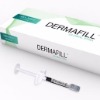
DERMAFILL ®
DERMAFILL® is the first of a so-called ‘4th generation’ of safer, and more effective, pure, monophasic injectable hyaluronic acid based dermal fillers which exceed the stricter standards imposed by the American Food and Drug Administration (FDA) for very low levels of BDDE in filler products.
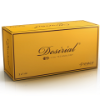
Desirial
Desirial is a hyaluronic acid dermal filler that has been developed for treating female vulvo-vaginal conditions, such as vaginal atrophy and dryness by non-surgical vaginal rejuvenation treatment.
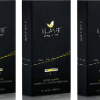
Ellansé
Ellansé is a new and unique non-animal, non-bacterial and non-human derived dermal filler family which are said by the manufacturer to be cost-effective by requiring less product, compared to others, for the same indications.
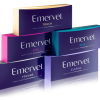
Emervel ®
Emervel (no part of the Restylane brand) is a cross-liked hyaluronic acid based dermal filler from Galderma. It was available in 5 product derivatives for differing indications, Touch, Classic, Lips, Deep and Volume which have now been renamed.
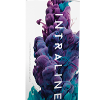
Intraline ®
Intraline® is an innovative, cross-linked, hyaluronic acid based dermal filler used for wrinkle reduction, facial contouring, lip enhancement, and other facial imperfections. It is manufactured in Sweden by Bohus BioTech AB, using hyaluronic acid sourced from France.
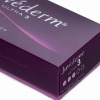
Juvéderm ® ULTRA
Juvéderm® ULTRA and Juvéderm® ULTRA Smile is an advanced, cohesive, 3D hyaluronic acid matrix dermal filler with local anaesthetic, manufactured by Allergan; the makers of Botox® / Vistabel®.
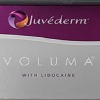
Juvéderm ® VOLUMA
Juvéderm® VOLUMA is a hyaluronic acid dermal filler used for recontouring and restoring the face in the case of age-releated volume loss in the cheek bone and chin regions. According to the makers, it delivers dramatic improvement in tissue quality, even in challenging areas, and is complementary to other aesthetic treatments and dermal filler procedures.
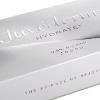
Juvéderm® HYDRATE
Juvéderm® HYDRATE is part of the Juvéderm® ULTRA family of dermal fillers which contain hyaluronic acid and the anti-oxidant, mannitol. It is designed to improve skin hydration and elasticity by replacing HA lost through ageing.

Neauvia Hydro Deluxe
Discover what Hydro Delux really does for tired, ageing skin. Not a filler, not a facial, but a smarter way to improve skin quality over time.

Perfectha ®
Perfectha® from Laboratory ObvieLine (a Sinclair IS Pharma company) is a highly advanced hyaluronic acid gel dermal filler, cross-linked by E-brid® technology and developed to fill out wrinkles, hydrate the skin and add volume.
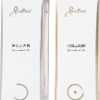
Princess ®
The Princess® range of dermal fillers are designed to combat the signs of ageing, with natural results. They are produced by the Austrian company Croma-Pharma GmbH, a company with a long history of creating hyaluronic acid (HA).
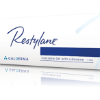
Restylane ® (inc Emervel Collection)
The Restylane range consists of hyaluronic acid dermal fillers incorporating the EMERVEL collection (Lyft (Perlane), Refyne, Fynesse, Volyme, Kysse, Defyne), all specifically designed for injection into the face.
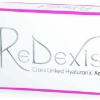
Revanesse ® and Redexis ®
Revanesse and Redexis are two new monophasic, non-animal hyaluronic acid based dermal filler brands manufactured in Canada by Prollenium.
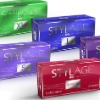
Stylage®
Manufactured by the French company Vivacy Laboratories, Stylage® is the first hyaluronic acid dermal filler with local anaesthetic lidocaine (lignocaine) and an antioxidant, in the form of mannitol, all within one product.
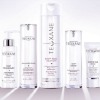
TEOXANE Cosmeceuticals
TEOXANE Laboratories are specialised in the development and manufacture of hyaluronic acid-based dermal fillers with their Teosyal brand. TEOXANE Laboratories are now providing their exclusive RHA resilient hyaluronic acid® technology in a complete skincare regimen – this includes optimal hydration to strengthen, protect and plump the skin.

Uma Jeunesse
Uma Jeunesse is a hyaluronic acid based dermal filler aimed at treating lines and wrinkles, naso-labial (nose to mouth) lines, marionette (mouth to chin) lines, sagging cheeks, as well as contouring lips, temples and noses.
What Are Dermal Fillers?
Discover how dermal fillers restore volume, soften lines, and boost confidence—without looking “done”. Start your aesthetic journey informed.

Ever looked in the mirror and thought, “I feel fine—so why do I look tired, deflated, or dull?”
That disconnect between how we feel and what we see is one of the most common reasons people explore aesthetic treatments. Over time, subtle shifts—like volume loss in the cheeks, lines around the mouth, or lips that seem a little thinner—can quietly reshape the story our face tells the world.
Enter dermal fillers. These injectable treatments offer a way to restore volume, soften wrinkles, and subtly sculpt your features—all without surgery or weeks of downtime. But despite their popularity, there’s still plenty of confusion: What are dermal fillers, exactly? How do they work? Are they safe? And how do you make sure the results still look like you?
In this expert-led guide, you’ll find clear, medically accurate answers to the most common questions about dermal fillers—from how they’re made to what happens during a treatment.
What You’ll Discover Inside the Full Guide:
- Fillers aren’t all the same—knowing the difference matters.
You’ll learn how hyaluronic acid fillers compare to collagen-stimulating ones, what each is best used for, and how long results typically last. - It’s not just about lines—it’s about structure.
Discover how fillers can restore mid-face volume, contour the jawline, or correct under-eye hollows to create a refreshed, balanced appearance. - Safety isn’t just about the product—it’s about the provider.
We break down the risks, what to look for in a qualified practitioner, and why experience and anatomy knowledge matter more than ever. - Realistic expectations are your best tool.
From what a treatment feels like to how soon you’ll see results, we guide you through every step so you can make informed, confident decisions.
Whether you're filler-curious or fine-tuning your aesthetic goals, this guide gives you trusted insights with none of the fluff or fear-mongering.
Ready to dive deeper into the science, safety, and subtle artistry of dermal fillers?
What Do Dermal Fillers Do?
All About Dermal Fillers: Costs, Side-Effects, and Benefits

You know the feeling—looking in the mirror and noticing that something’s shifted. Maybe your cheeks seem flatter, your under-eyes a bit more shadowed, or the lines around your mouth suddenly more defined. You still feel like yourself, but your reflection tells a different story. This is where dermal fillers come in—not to change your face, but to bring it back into balance.
In our in-depth guide, we explore what dermal fillers actually do, how they work beneath the skin, and why they’ve become a go-to treatment for restoring volume, enhancing facial contours, and softening signs of ageing without surgery.
Here's what you'll discover inside the guide:
-
Volume restoration with subtlety and precision
As we age, our faces naturally lose fat, collagen, and bone density—leading to hollow cheeks, deeper folds, and sagging contours. Fillers replace this lost volume with soft, gel-like substances that sit beneath the skin and restore structure in a way that’s barely noticeable to others, but instantly recognisable to you. -
Contouring and definition, without makeup or scalpel
Skilled placement of fillers can lift cheekbones, define a softening jawline, or subtly shape the chin and nose. It’s like the sculpting effect of clever contouring—but longer-lasting and completely bespoke to your facial anatomy. -
Support for the skin, from the inside out
Some fillers go beyond structure. Hyaluronic acid-based products hydrate and attract moisture to the skin, giving you that well-rested, ‘just-had-a-facial’ look for months. Others stimulate collagen over time, offering regenerative effects with each treatment. -
Emotional harmony between how you feel and how you look
Many patients describe this not as a vanity fix, but a quiet recalibration. You still look like you—just a little more awake, a little more you. It’s about alignment, not alteration.
If you’ve ever wondered whether dermal fillers are simply about erasing lines or if there’s something deeper going on beneath the surface, this guide will give you clarity and confidence.
What to Expect From A Dermal Filler Treatment
All About Dermal Fillers: Costs, Side-Effects, and Benefits

Are Dermal Fillers Safe?
All About Dermal Fillers: Costs, Side-Effects, and Benefits

Where Can Dermal Fillers Be Used?
All About Dermal Fillers: Costs, Side-Effects, and Benefits 1

Dermal Fillers Usage, Benefits, And Safety
All About Dermal Fillers: Costs, Side-Effects, and Benefits

Dermal Fillers For Lips
All About Dermal Fillers: Costs, Side-Effects, and Benefits

Dermal Fillers For Cheeks
All About Dermal Fillers: Costs, Side-Effects, and Benefits

Dermal Filler For Nasolabial Fold
All About Dermal Fillers: Costs, Side-Effects, and Benefits

Dermal Filler For Marionette Lines
All About Dermal Fillers: Costs, Side-Effects, and Benefits

Dermal Filler For Tear Trough
All About Dermal Fillers: Costs, Side-Effects, and Benefits

Dermal Filler For Jawline and Chin
All About Dermal Fillers: Costs, Side-Effects, and Benefits

What Happens During A Dermal Filler Treatment?
All About Dermal Fillers: Costs, Side-Effects, and Benefits

How Long Do Dermal Fillers Last?
All About Dermal Fillers: Costs, Side-Effects, and Benefits

Who Should You Trust To Treat You With Dermal Fillers?
All About Dermal Fillers: Costs, Side-Effects, and Benefits

Dermal Fillers Quick FAQs
Clear, Concise Answers to Common Queries
A simple, no-fluff roundup of frequent Dermal Fillers questions to help you get the facts fast.

How soon before an event should I book my dermal filler treatment?
It’s best to schedule treatment at least two weeks before an important event. This allows time for any swelling or bruising to resolve and for the filler to settle into its final position for the most natural appearance.
Can dermal fillers be reversed if I don’t like the results?
Yes — most hyaluronic acid fillers can be dissolved using an enzyme called hyaluronidase. This process breaks down the filler safely and quickly, usually with visible improvement within days.
Is there a best age to start dermal fillers?
There’s no fixed “best age.” Some people choose fillers in their late 20s or 30s for early volume restoration, while others wait until signs of ageing become more pronounced. The decision depends on your goals, skin condition, and facial anatomy rather than age alone.
What’s the difference between using a needle and a cannula for filler?
A needle is sharp and allows precise placement in smaller areas, while a blunt-tipped cannula can reduce bruising and swelling and is often used for delicate regions like under the eyes. Your practitioner will choose the method based on the treatment area and desired outcome.
Will dermal fillers make my face look puffy or unnatural?
When performed by a skilled medical professional with the right product choice, dermal fillers should enhance your features subtly without an overfilled appearance. Overuse or poor technique is the main cause of an unnatural look.
Do dermal fillers hurt?
Most people describe the sensation as mild discomfort rather than pain. Fillers often contain lidocaine, and numbing cream or local anaesthetic can be used to make the procedure more comfortable.
Can I combine dermal fillers with other treatments?
Yes — fillers are frequently paired with treatments like Botox for dynamic wrinkles, skin boosters for hydration, or energy-based therapies for skin tightening. A combined approach can address multiple ageing concerns more effectively.
How do I choose the right filler product for me?
The right filler depends on the treatment area, your skin type, and your goals. Softer gels suit lips and fine lines, while thicker, structural fillers are used for cheeks, jawline, and chin. Your practitioner will recommend the best option after assessing your needs.
Can I exercise after dermal filler treatment?
It’s advisable to avoid intense exercise for 24–48 hours. Elevated blood flow and heat can increase swelling or bruising and may affect how the filler settles.
Are dermal fillers suitable for men?
Absolutely. Men often use fillers to enhance jawline definition, restore cheek volume, or soften deep lines. Treatment plans are tailored to maintain masculine facial proportions.
How do I maintain my results for as long as possible?
Follow aftercare advice, protect skin from the sun, stay hydrated, and avoid smoking. Regular maintenance appointments before the filler fully wears off help preserve a consistent look.
Can dermal fillers treat acne scars?
Certain fillers can soften the appearance of atrophic (indented) acne scars by raising the skin and stimulating collagen. This is a specialised treatment and should be performed by an experienced injector.
What happens if I gain or lose weight after fillers?
Significant weight changes can affect facial fat distribution, which may alter how fillers look. In most cases, minor adjustments can restore balance.
Are there areas of the face where fillers should not be used?
Fillers aren’t suitable for every facial line or hollow. Areas with high muscle movement or very thin skin require special techniques, and some concerns — like significant skin laxity — may be better treated with other methods.
What questions should I ask at a dermal filler consultation?
Ask about the practitioner’s qualifications, experience with your chosen treatment area, the specific filler brand, potential side effects, aftercare, and how complications are handled. A thorough consultation is key to a safe, satisfying result.


